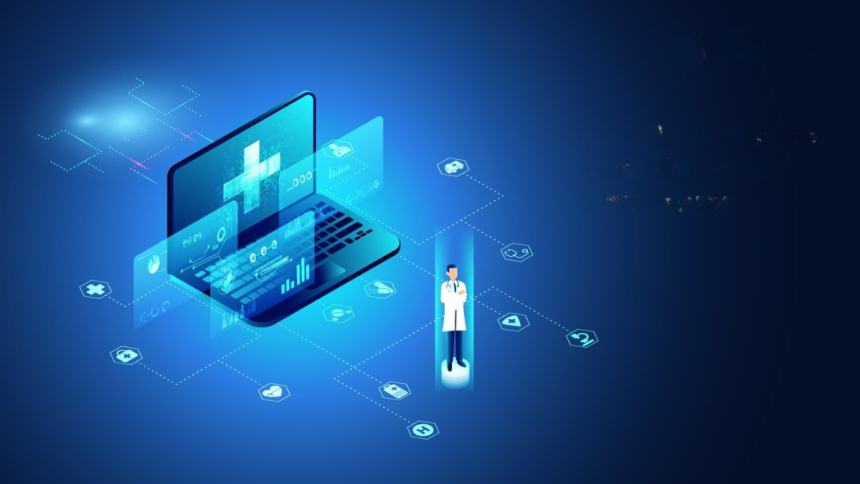In the fiercely competitive world of medical device development, companies are often hindered not by a lack of innovation, but by the regulatory complexities that accompany the path to commercialization. While safety and efficacy standards are rightly rigorous, the administrative burden of compliance can stall even the most promising technologies. Multiple layers of documentation, audit trails, and approval checkpoints can stretch development timelines and exhaust internal resources. Developers must not only meet domestic standards such as those from the FDA, but also harmonize compliance with international regulations, including the EU’s Medical Device Regulation (MDR) and ISO 13485. Each of these frameworks demands distinct procedural documentation, often resulting in duplicated efforts and siloed systems.
Compounding the problem is the fragmentation of the tools used to manage regulatory compliance. Many companies juggle spreadsheets, email chains, and outdated software in a bid to track changes, manage risks, and maintain traceability. This fragmented approach can result in overlooked updates, misaligned documentation, and significant delays during audits. In a space where speed to market can determine both financial viability and patient access, such inefficiencies present real strategic disadvantages. In-house regulatory teams are forced to become digital archeologists, sifting through scattered files and reconciling conflicting records under pressure. The lack of a coherent system not only slows processes but increases the likelihood of non-compliance, which can be costly both financially and reputationally.
Organizations are recognizing that compliance must shift from being a final hurdle to an integrated component of product development. Instead of viewing regulatory tasks as checkpoints, companies are now exploring ways to embed compliance as an ongoing process from early-stage design through post-market surveillance. This shift requires new mindsets and tools, ones that don’t treat quality systems, manufacturing records, and product lifecycle data as isolated workflows. When compliance is treated as a constant companion rather than an endgame, teams are better positioned to develop products that meet global standards from the outset. This realignment paves the way for faster iteration, smarter risk management, and fewer surprises during regulatory submissions.
The Cost of Compliance: Financial Strain and Opportunity Loss
The financial toll of regulatory complexity in MedTech is not merely theoretical. According to industry surveys, mid-sized companies may spend up to 10% of their annual revenue on regulatory affairs, including labor, systems, and external consultants. This burden is particularly pronounced during pivotal development stages, such as clinical validation or design transfer to manufacturing. Each delay in securing approval translates directly to lost market opportunity and postponed revenue streams. Moreover, when errors are discovered late in the development process, remediation costs can spiral, requiring re-validation and re-testing that could have been avoided with better traceability systems.
Equally damaging is the opportunity cost associated with sluggish regulatory workflows. In a landscape where emerging markets and digital health integrations are rapidly shifting the competitive terrain, companies that fail to move nimbly are often outpaced. This is especially critical for startups and scale-ups, which may only have a narrow window of investor runway to prove market viability. For these firms, each week of regulatory delay is not just a minor setback, but a potential existential threat. When financial planning is built on optimistic assumptions about time-to-market, the harsh reality of compliance-driven delays can derail growth strategies and strain investor confidence.
The competitive advantage of efficient regulatory workflows cannot be overstated. Investors are increasingly scrutinizing not only clinical innovation but also operational execution, particularly in areas related to regulatory readiness. Strategic partnerships with contract manufacturers or compliance consultants can help alleviate some of the burden, but without a shared system of truth, these collaborations risk introducing new inefficiencies. This is where integrated digital platforms like Enlil become vital. Enlil offers a unified, cloud-native platform that brings together PLM, QMS, ERP, and MES into a single, traceable solution. Its ability to streamline workflows across internal teams and external partners, from OEMs to contract design firms, represents a significant shift in how MedTech companies can leverage compliance as a strategic advantage rather than a necessary cost.
A Digital Revolution in Workflow Management
The push toward digitization has transformed industries from finance to agriculture, yet medical device development has historically lagged in adopting enterprise-grade workflow automation. This is due in part to the sector’s cautious regulatory environment, where any new tool must itself be validated for compliance. However, the tide is shifting. With increased regulatory encouragement for digital traceability and the growing complexity of medical devices, companies are embracing digital transformation not as a luxury but as a necessity. Robust digital tools now make it possible to manage development timelines, compliance records, and manufacturing changes in a single, coherent environment.
Automation of documentation and traceability has become a cornerstone of this transformation. Software solutions now allow for automatic version control, intelligent change management, and cross-functional integration between engineering, quality, and manufacturing teams. These platforms reduce the burden of manual data entry, decrease the risk of error, and facilitate faster audits. More importantly, they allow companies to adopt a “compliance by design” approach where regulatory considerations are built into every phase of the product lifecycle. With each new generation of platforms, the usability and intelligence of these systems have improved, allowing even lean teams to operate at an enterprise level of regulatory maturity.
Digitization also enables a proactive approach to regulatory changes. With automated monitoring and alerts, companies can adapt to shifting global standards more efficiently than before. Instead of scrambling to comply with new EU regulations or FDA updates, development teams can assess and respond to impacts in real time. This not only saves time but fosters a culture of agility and resilience. In a climate of evolving healthcare needs and fast-paced technological advancement, such readiness can differentiate market leaders from lagging peers. Regulatory affairs, long treated as a reactive discipline, is now becoming an integrated and strategic function within development organizations.
Collaborating Across the Ecosystem
No medical device reaches the market in a vacuum. Development typically involves a web of contributors, including contract manufacturers, clinical research organizations, design firms, and specialized regulatory consultants. Each of these players has its own systems, timelines, and standards. The challenge lies in coordinating these disparate entities without compromising traceability, quality, or speed. Without shared systems or standards, information often gets lost in translation, and version mismatches can create significant rework. A single discrepancy between a CAD file revision and the manufacturing spec can result in wasted time and material, and it may also lead to regulatory penalties if it goes unnoticed.
Digital collaboration tools and cloud-based platforms are making it easier for distributed teams to work in sync. Version control, audit trails, and secure sharing environments have become essential features of modern development toolkits. But it is not enough to simply share documents digitally; what’s required is a shared language of compliance and development workflows. Platforms that integrate PLM with QMS and ERP functions across parties can eliminate the communication gaps that plague multi-organizational development. When all stakeholders work from the same data source, decisions can be made more quickly, revisions can be tracked with confidence, and handoffs can happen without friction.
Trust and transparency are foundational to effective collaboration, particularly when regulatory standards are on the line. Contract manufacturers must be able to demonstrate compliance with the same rigor as the OEMs they serve. Likewise, external design partners must be looped into risk assessments and validation protocols without losing visibility into upstream or downstream impacts. Integrated platforms not only support this transparency but enable secure compartmentalization, ensuring that partners see what they need to while maintaining confidentiality. As MedTech ecosystems grow more complex, the ability to collaborate seamlessly across organizations will become not just a benefit but a baseline requirement for market participation.
AI and Predictive Analytics: The Next Frontier
Artificial intelligence is poised to redefine how regulatory workflows are designed, monitored, and optimized in the medical device sector. While AI’s application in clinical diagnostics and robotic surgery often steals headlines, its role in process optimization is equally transformative. By analyzing large volumes of development and compliance data, AI can identify patterns that might indicate potential delays or non-conformities long before they surface during an audit. This allows for preemptive corrections and smoother submission processes. Predictive models can also suggest the most efficient testing paths or highlight areas of redundant documentation.
Machine learning is particularly valuable when applied to historical regulatory submission data. By analyzing what types of documentation, phrasing, or test results have historically led to approval delays, AI can provide intelligent suggestions to improve future submissions. This has the potential to dramatically reduce cycles of feedback from regulators and streamline go-to-market strategies. Moreover, AI-enabled systems can continuously learn from past audits, building institutional knowledge that improves compliance readiness across future projects. Over time, this reduces reliance on individual regulatory experts and institutionalizes best practices within the organization.
However, AI is not a silver bullet. It must be paired with high-quality, structured data to function effectively. Many medical device companies still struggle with data silos and inconsistent taxonomy across their systems, which limits the effectiveness of predictive analytics. Integration is again the key. Only by consolidating data from PLM, QMS, and other systems into a centralized framework can organizations truly harness the promise of AI. As tools evolve and regulatory bodies begin to acknowledge AI-enabled submissions, early adopters will enjoy faster cycles, more predictable outcomes, and greater confidence during audits and inspections.
Building a Culture of Regulatory Agility
Beyond systems and tools, the most enduring improvements in regulatory workflows come from cultural transformation. Organizations that view compliance as a dynamic capability rather than a rigid constraint tend to navigate development more effectively. This cultural shift requires leadership buy-in and a commitment to continuous learning. Teams must be trained not just on how to follow rules, but how to interpret and anticipate them. A proactive regulatory mindset empowers developers, quality engineers, and executives alike to align around shared goals and long-term value creation.
Leadership plays a critical role in setting this tone. When executives champion investment in traceability systems, prioritize audit readiness, and reward regulatory innovation, they create an environment where compliance becomes a shared responsibility. This, in turn, reduces the organizational friction that often arises when regulatory affairs operate in isolation. Cross-functional teams become more fluid, feedback loops shorten, and decision-making is grounded in traceable data rather than hunches or last-minute reconciliations. The result is a more adaptive and resilient product development engine.
The future of medical device development will belong to organizations that are not only technically excellent but also operationally agile. Regulatory agility does not mean cutting corners; it means being prepared, adaptive, and strategically aligned with evolving global expectations. It means creating workflows that support speed without sacrificing safety. As technology continues to evolve and regulatory bodies adopt digital-first approaches, those who have already embedded agility into their culture will be best positioned to lead. Simplifying regulatory workflows, then, is not just a matter of tools or tactics. It is a long-term strategy for sustainable innovation in the MedTech industry.
Lynn Martelli is an editor at Readability. She received her MFA in Creative Writing from Antioch University and has worked as an editor for over 10 years. Lynn has edited a wide variety of books, including fiction, non-fiction, memoirs, and more. In her free time, Lynn enjoys reading, writing, and spending time with her family and friends.















